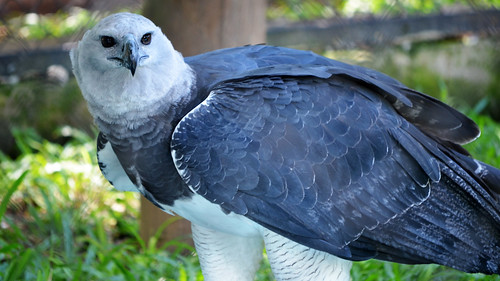
Image courtesy of Rodrigo Soldon 2's Flickr page - Harpia: https://www.flickr.com/photos/caochopp/6926420222/in/photolist-by4Hqj-by4Fcm-bLYof6-azohC7-9xSzug-daYRbi-ackbja-9uWASB-6skG7P-9m1Tpg-f8ehgu-eiJFXp-d9oFwN-ofrL1D-nW9bNV-azrViM-66oeqn-gJCfNh-gJBvff-disUYa-6eLdm7-mu43Z-azonJ9-azonRS-dD9M22-98dNNh-rJPAEn-by4Gbf-aY8tyT-eSr96g-bDPgr6-6eCkRk-5FeFRr-6e9maw-82CvMF-6e546c-fF3pgS-5V81DJ-9ARMRS-6eGsFy-82FEHu-7NbTCk-6eCjMZ-qvv3dt-uJzjhn-jXLiQw-vEREeu-yxzikx-9we5bB-cABH6w
Harpy eagles get their name from the legendary Harpies of Greek mythology, although they do not live anywhere near Greece.
They have an enormous wing span, and live in primarily subtropical climates, mostly in Latin America, from southeastern Mexico to northern Argentina. It is the national bird of Panama, and can be seen on that nation's coat of arms.
They have no natural predators.
Below is a link to learn more about these fascinating birds:
This Massive Bird Is One Of The Largest In The World, And It Has A Disturbing Secret
No comments:
Post a Comment